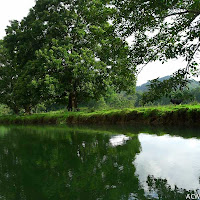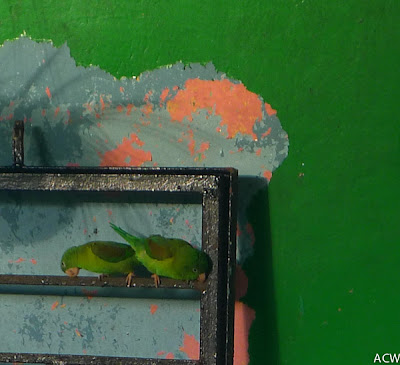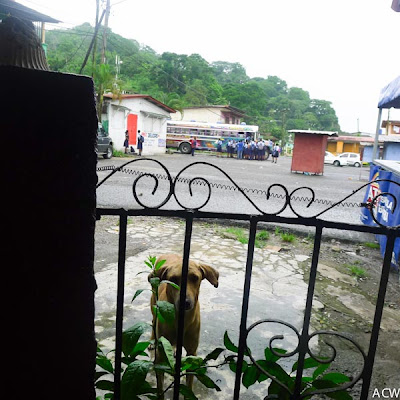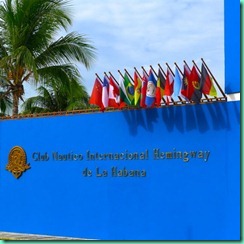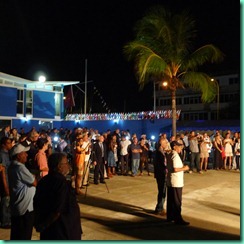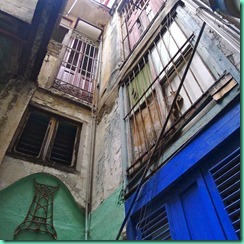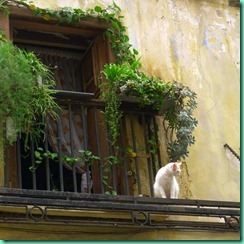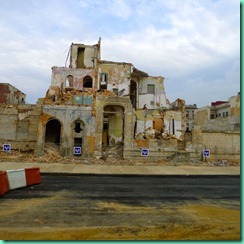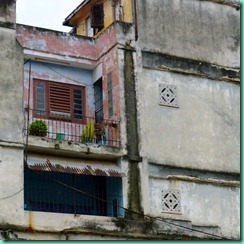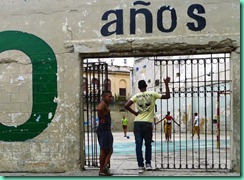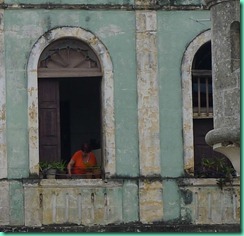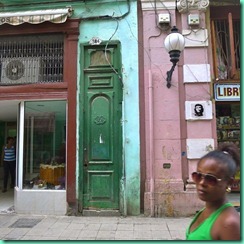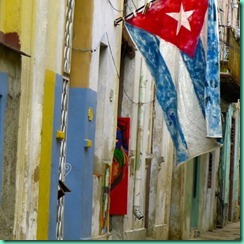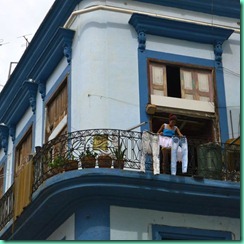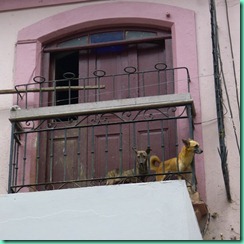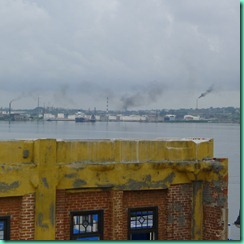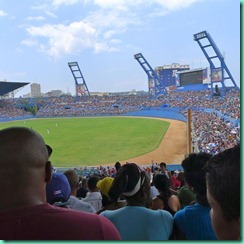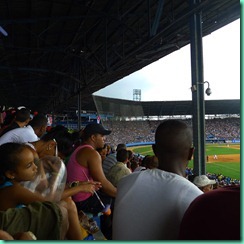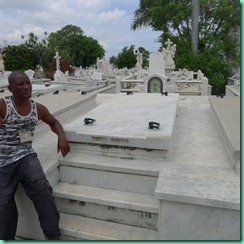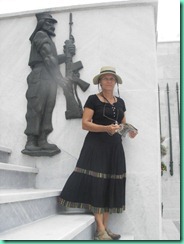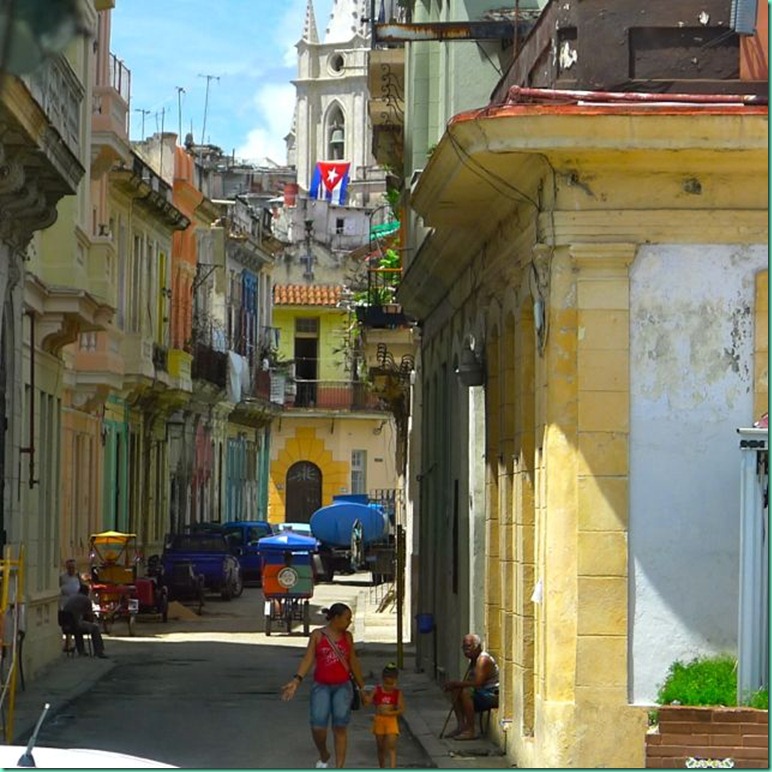
PHOTO STREET SCENE HAVANA
The wheel of fortune spun me to Havana last month, or rather, to Santa Fe, the harbor a bit to the west of Havana, Cuba, where the Club Nautico Internacional Hemingway de Cuba is located. The occasion was the club’s 20th anniversary celebrations. The boating publication Caribbean Compass was invited to attend, editor Sally Erdle invited me, and there we were!
Our main event was a workshop on nautical recreation (held at a distinctly high-end Melia hotel), where we each spoke on trends in recreational boating. I discussed cruising sailors in general and ‘commuter cruisers’ in particular-what we might be looking for in a cruiser-friendly Cuba. I’d be curious to know what any ‘reader cruisers’ might have put on the list.
It was quite the experience to be simultaneously translated into Spanish, and to watch audience reaction just slightly out of sync with what I was saying, which of course was already a little bit out of sync with what I was thinking! (“oops, I forgot to mention…”)
Commodore Escrich and his staff have been working hard for two decades now to promote boating, youth watersports, and international brotherhood. They’re to be commended for trying to peer into the future, past the US trade embargo, and maybe, past the Castro administration and 54 years of revolutionary fervor.
 |
The Marina Hemingway consists of three or four excavated canals running parallel to the ocean shore. We could watch the comings and goings, such as this French catamaran, from our hotel room’s balcony. There were a surprising number of vessels with US hailing ports, some of which look permanently resident. The cruisers we met reported a few shortcomings about the facilities (such as, no water on the dock one day) but were happy to be there nonetheless. |
Then, I was free to relax, and walk and gawk and talk, three of my favorite things, in Havana. Even better, Sally is an old friend who travels at about the same speed and has both similar and complementary travel tastes and skills. We had a fine old time.
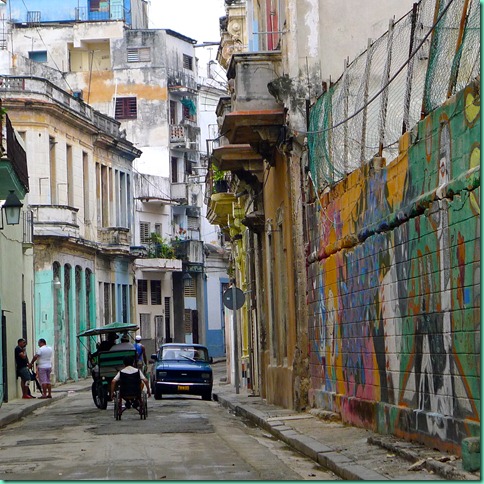
We hopped the hotel bus to Habana Vieja daily, seeking serendipity. We rode car taxis, bike taxis, public buses, ferries, but mainly we walked. We went to art galleries, a classic cemetery, baseball, shrines, museums, department stores, we visited the cruising fleet, and then there were a pair of glittery nighttime extravaganzas – no wonder serendipity came easily. Just think what we could have found in six weeks instead of six days!
I always want to know ‘what’s going on’, but there seemed little point in asking Cubans questions about a future they’ve been contemplating for decades, or about the past either. As one young man told me, “we know it’s different between people than between governments.” Thinking about the demographics of the country, after half a century, at least half the population has no recollection of a pre-revolutionary Cuba.
A fellow workshop speaker commented: what may have looked like disadvantage to Cubans in years past is now really a plus. I’ve also read that, no matter what their opinion about their government, Cubans are proud of their independence and hold their heads high.
Now I’ll just stick to pictures. |
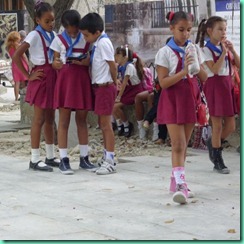
|
First, what’s Havana without the classic architecture, the Spanish colonial detailing, the weathering tropical colors. There’s something about that marine-filtered light too. I took way too many pictures.
From a whirlwind trip in the late 1990s I recall a lot of crumbling, mildewed dereliction and urban decay especially along the Malecon waterfront, of which the first photo of a current rehab project is a pretty drastic example. But these days a lot of Habana Vieja looks pretty good.
 |
And then there are the cars. The automotive time warp is charming, at least for the visitor. There are newer cars too, more of them than old ones, but who is interested in those?
Modern, articulated buses run the routes around Havana. The one time we rode the public bus we were squeezed aboard and wedged in place by the entry doors. So, they need more buses, pronto!
Here’s Omero with his 1948 Dodge. |
 |
One mission was to check out the Habana Biennele -which is to say,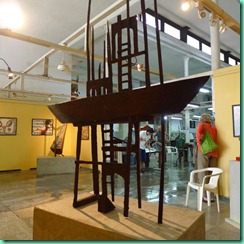 visiting any art gallery we saw. This print workshop was a work of art in itself, with a second floor balcony gallery and skylights through which heavy rains poured. No wonder the floor is clean. If only I had a place for the boat in the foreground!
visiting any art gallery we saw. This print workshop was a work of art in itself, with a second floor balcony gallery and skylights through which heavy rains poured. No wonder the floor is clean. If only I had a place for the boat in the foreground!
Serendipity calls for a lot of time spent cruising the streets, peering into doorways and wandering into anything that looks remotely public. We climbed to the belltower of a church. We waltzed ourselves up to the rooftop garden of a classic downtown hotel in fine gringa fashion. We toured the Presidental railroad car and the former home of the legislature, giggled at not one but two fashion shoots featuring stunning red shoes with 5″ heels, got a boost from the live music playing in bars and restaurants every block or so. Let’s see how many more pictures I can manage. I wish you could hear the music as well.
This is the ferry terminal, and the ferry, to the ‘other side’; extra (but cursory) security inside and out 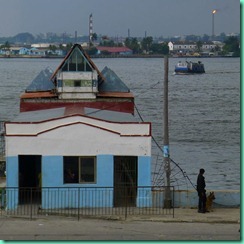 because once upon a time, the ferry was hijacked for a trip to Florida. Oil refinery in the background, and the port, which is not nearly as active as Colon, Panama.
because once upon a time, the ferry was hijacked for a trip to Florida. Oil refinery in the background, and the port, which is not nearly as active as Colon, Panama.
We stood in a 15-minute line for the 15-minute ride on a well-used standing-only ferry to visit the Iglesia de Nuestra Senora de Regla, a Catholic church with Santeria overtones built about 1805. 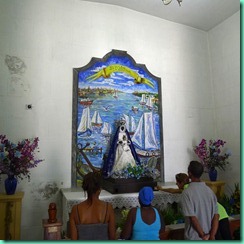
The intercession of the Virgin of Regla, who survived a storm at sea in the Straits of Gibraltar, is particularly valued by mariners, and those who value them.
 |
What would a trip to Havana be without a visit to the Museum of the Revolution? And what better re-use of the Presidential Palace (bullet holes in the walls indicate the marble is veneer barely 1/2 inch thick) from which Fulgencia Batista was evicted than to fill it with revolutionary artifacts? Great breeze up on the third floor too. I’ve been reading Che Guevera’s biography, and what I saw in the museum hangs together better now. It’s amazing what you could make a revolution with in the 1950s.
|
 |
 |
| Cuerdo means rational or sensible- sensible love isn’t love? says Che. |
|
 |
 |
Baseball, anyone? Cuba is a nation of baseball fanatics, so we attended Game One of the ‘Cuba Series’ (Havana’s own Industriales, the Lions, versus Ciego de Avila, los Tigres) along with 60,000 others. Tickets in CUCs (an internationally-exchangeable currency) would cost $3, compared to mere pennies if paid in local pesos. No beer vendors, and no beer sales in the vicinity, no hotdogs, just baseball. And someone wafting balloons down from upper right field. They were clear in color, identical in size, drifting around like virus capsules you’d see inside a cell under a microscope. We finally realized they were inflated condoms. There are a couple in this photo, but invisible! Then we got rained out, as happens regularly on May afternoons, the taxi drivers say. “Our “team, Industriales, eventually lost the championship, but the fact that we’d been to a game was a reliable conversation starter.
 |
Sally (L) and Ann (R)
photo by Pepe Millard |
What kind of nightlife could a person whose normal bedtime is sunset plus two have? I surprise myself sometimes. There was 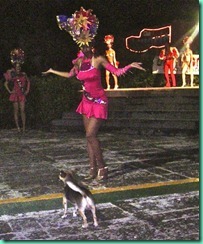 the yacht club awards presentation, where I tried to schmooze everyone, the young racers, resident ex-pats, visiting yachtsmen, conference attendees, and the hard-working yacht club staff, plus, for old time’s sake, the caterers.
the yacht club awards presentation, where I tried to schmooze everyone, the young racers, resident ex-pats, visiting yachtsmen, conference attendees, and the hard-working yacht club staff, plus, for old time’s sake, the caterers.
And there was a fine dance show right at the Hotel Acuario – a couple dozen phenomenally fit athlete/acrobat/dancers who, like Ginger Rodgers, could do it backwards and in high heels, also in glitter, head-top statuary, feathers and permanent professional smiles. This high-energy show was popular with every single viewer; the dog barked most enthusiastically.
Last but not least, the Cemeterio de Colon, acres (?) of monuments, statues, crypts, and stories. As happened more than once, a worker sidled up to us offering a little tour, clearly expecting a tip, which in CuCs might have approximated his weekly salary. And it would be nice to know further specifics but we were in it mainly for the atmosphere. Someday though, there’s a ‘life’s work’ awaiting the diligent anthropologist – Stories the Cemetery Could Tell.
For example, one grave, I can’t say which, is of Alberto Vasquez who attempted to escape Cuba by stowing away in the wheel carriage of a jet, not knowing he’d chosen a plane bound for England. His frozen body fell out on arrival, and there was great political theater and spin at the burial. This according to Enduring Cuba by Zoe Brandt, referenced below. I’d like to know more about Raul and Julia, and the little bird that looks in on them. And yes, that’s me, looking serious in front of the Monument to Revolutionary Heroes!
Further to the subject:
Enduring Cuba, Zoe Bran, published by Lonely Planet and available for Kindle. Thoughtful comments based on her visits in years past.
The Island that Dared, by the intrepid Dervla Murphy, still refreshingly different in her late 70s. Short review here: http://galivantstravels.blogspot.com/2009/07/bloggers-manifesto-books.html
Che Guevera: A Revolutionary Life, Jon Lee Anderson
Telex from Cuba, by Rachel Kushner, a novel about the era at the start of the Revolution, from an American girl’s point of view
Bitter Fruit, by Stephen Schlesinger and Stephen Kinzer, about the American role in the 1954 coup in Guatemala, which is where Che Guevera was when he got the fire in his belly, and illustrates the general political atmosphere in which the Cuban Revolution occurred later in the decade.
There are also a number of books about Big Sugar, Big Rum, Big Mobster influences on 1950’s Cuba, but first I’ve got to finish with Che!
Haven’t been able to watch this yet, but it comes recommended, on the subject of privatizing the economy:
http://www.aljazeera.com/programmes/peopleandpower/2011/08/2011831736730355.html
I was sorry to leave with so much unexplored, and unexplained!

Technorati Tags:
Havana street scenes,
1948 Dodge,
classic autos,
Cemeterio de Colon,
Virgin de Regla,
ferry,
balconies,
Raul y Julia,
Club Nautico Internacional Marina Hemingway, Havana streetscape,











